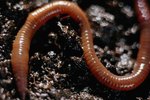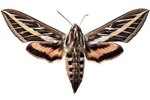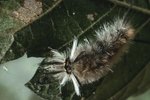
Ladybugs, ladybirds, ladybird beetles, lady beetles: just four common terms for the beloved, familiar Coccinellidae family of bugs. Ladybugs have quite an impressive taxonomic classification: They belong to the largest phylum, the largest class and the largest order. The Coccinellidae are a remarkably sizable family as well.
Taxonomic Classification
Taxonomy, also known as systematics, is a method of classifying organisms based on their evolutionary relationships and phylogeny. The phylogenetic tree is similar to a vast family tree. At the top of the tree are the three domains: Eukarya, Bacteria and Archaea. The domains divide into branches called kingdoms, which divide according to phyla, and then to classes, orders, families, genera and species. In some branches, more precise separation necessitates further classification into groups such as sub-families, sub-orders, tribes and subspecies. Eukarya contains six kingdoms, including Animalia. The animal kingdom is the largest, and it contains six phyla: mammals, fish, reptiles, amphibians, birds and insects. Ladybirds are of the Arthropoda phylum.
Phylum
Lady beetles belong to the phylum Arthropoda, a phylum with so many species it is larger than all other phyla combined. Examples of arthropods include insects, crustaceans and arachnids. As diverse as they are, most arthropods share a few common characteristics, including exoskeletons and segmented bodies. Most arthropods reproduce through copulation and internal fertilization and most lay eggs.
Class
Ladybugs belong to the class Insecta, which contains the majority of all species of animals on Earth -- approximately 1 million known species and an unknown number of unrecognized species. According to Michigan University's Animal Diversity Web, the number of unknown species could be several times more than the number of known species. Although diverse, members of Insecta share several characteristics including three body parts, compound eyes and six legs. Many insects, including ladybugs, go through a complete metamorphosis: egg, larvae, pupae and adult. Other insects hatch as nymphs, small versions of adults.
Order
As beetles, ladybugs belong to the scientific order Coleoptera, the largest order of animals by number of species, with approximately 280,000 known species; 20 percent of all living species are beetles, according to Texas A&M University AgriLife Extension. Although diverse, beetles typically have two pairs of wings and go through complete metamorphosis. The larvae of most beetles are grubs and somewhat resemble worms or maggots. Many of man's insect enemies are beetles; this group includes several agricultural and landscape pests of economic importance as well as many species that invade homes and structures.
Family, Genera and Species
The family Coccinellidae is inclusive of all ladybugs. The family is sometimes referred to as the "ladybug family." Over 350 genera of ladybugs exist worldwide, with almost 6,000 species. Almost all ladybugs are predatory and feed on other insects; their food preferences have resulted in these familiar insects being labeled beneficial. A few species, however, aren't predatory and feed on plants and fungi. Most ladybugs are dome-shaped and either round or elongate. Many, but not all, species have spots.
References
- University of Michigan Animal Diversity Web: Coccinellidae Classifictation
- University of Michigan Animal Diversity Web: Arthropoda
- University of Michigan Animal Diversity Web: Insecta
- Texas A&M AgriLife Extension: Order Coleoptera
- Tree of Life Web: Coccinellidae
- Evergreen State College Evergreen Biota: Coccinellidae
- University of Michigan BioKids: Lady Beetles
- Departments of Entomology and Natural Resources Sciences at Washington State University: Classification of Species
Resources
- University of Kentucky College of Agriculture: Ladybugs
- Minot State University Cyril Moore Science Center Museum: Coccinellidae
- University of Arizona Center for Insect Science Education Outreach: Ladybug or Ladybird Beetle Information
- University of Georgia Museum of Natural History: Classification of Animals
Photo Credits
-
Jupiterimages/Photos.com/Getty Images
Writer Bio
With a professional background in gardening, landscapes, pests and natural ecosystems, Jasey Kelly has been sharing her knowledge through writing since 2009 and has served as an expert writer in these fields. Kelly's background also includes childcare, and animal rescue and care.



